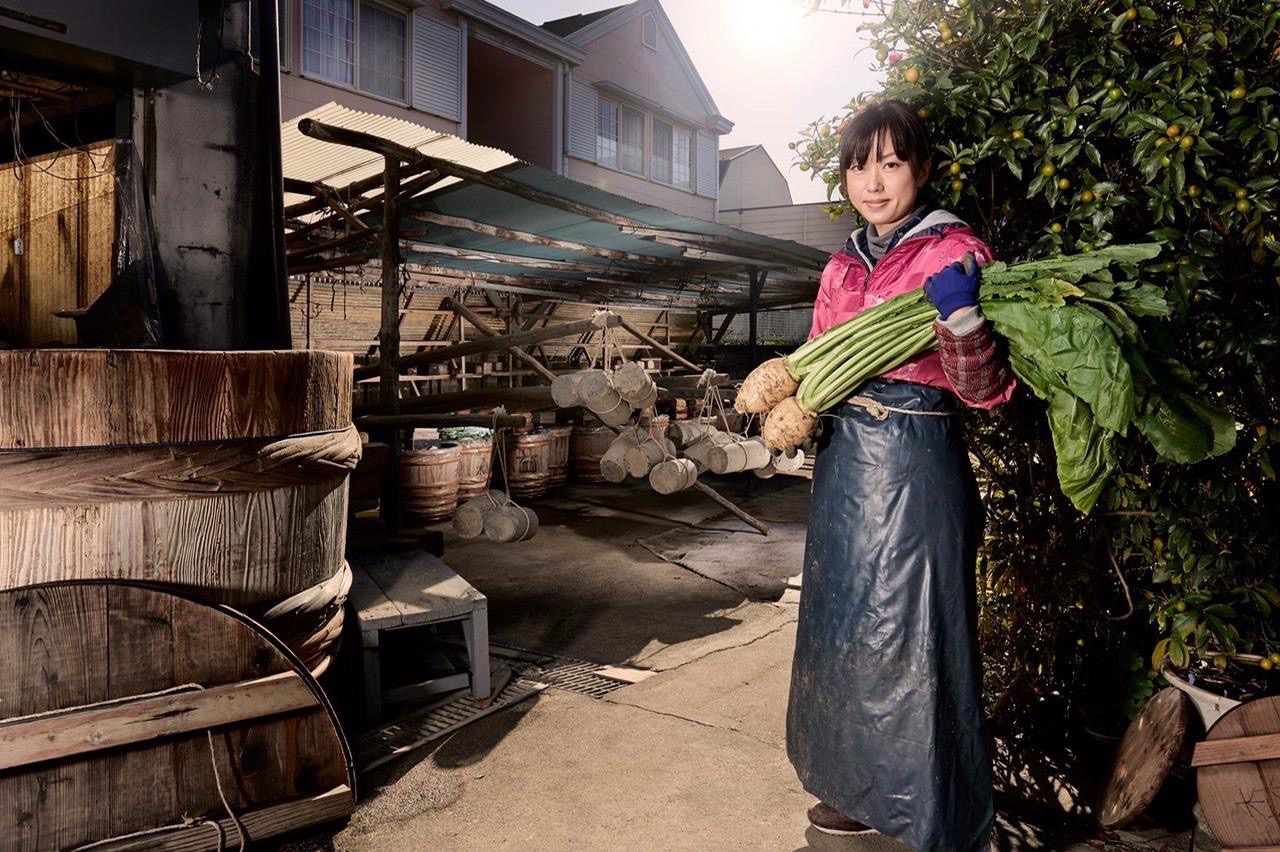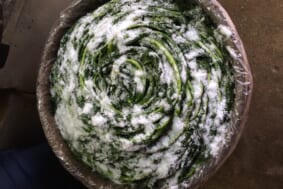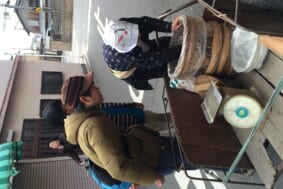すぐき漬けの食文化を絶やさないプロジェクト

授業をきっかけに社会課題として展開
すぐき漬けをみなさんご存知ですか?もしかしたら、「知らない」、「食べたことない」という人がいるかもしれません。京都の三大漬物なかの一つなのです。今、すぐき漬けの消費量は減少しておりこのまま減少をつづけるとどうなることかと心配されています。このすぐき漬けの食文化を絶やさない、リバイブ!というゴール設定でプロジェクトを立ち上げました。振り売りという昔ながらの良き文化も衰退してしまった今、もう一度京都の伝統的な食文化に目をむけ、本当に良いものとは何かを私たち自身に問いかけつつ、プロジェクトを展開してきたいと思います。
まずは、森田さんのレクチャー をお聞きください。
きっかけは、授業フレームから出発します。技術家庭では、生物育成、栽培、調理を通して生活の質的改善と維持という観点からつながります。また、他教科でもマーケティング、ブランディング、商品流通、地域創生、ソーシャルイノベーションなど、つながるきっかけはたくさんありますので、それぞれの授業のコンテンツをそれにコミットしていける道筋を柔軟に準備したいと思っています。しかしながら、授業の枠内に現実的課題をフィックスしようとすると、そのテーマはどうしても”第二の現実”といういうべき感覚になってしまいます(もちろん、伝統的文化遺産の伝達という側面をベースにした「教材」概念の一長一短を理解したうえで)。高校生が良く言う「なんちゃって設定のプロジェクト」から本物の社会課題にアプローチしていく”すぐき漬けプロジェクト”にぜひ多くの知恵や工夫を集め、みんなでアプローチしていきたいと思っています。
おもしろい企画、学びプロジェクトを企てませんか?「ピザとすぐき漬け」、「パスタとすぐき漬け」、「すぐき漬けグルメコンテスト」、「振り売り体験」、「漬け込み作業体験」「すぐき漬けyoutuber」、、、
アイデアをください。いっしょにつながっていきましょう。(沼田)
参考)
ーーーーーーーーーーーーーーーーーー
A project that never stops: the food culture of “SUGUKI” pickled vegetables
Developing as a social issue through classwork
A student-assisted growing social movement
Do you know “SUGUKI” pickles? Maybe some people say “I don’t know” or “I’ve never eaten them”. They are one of the three major pickles in Kyoto. Right now, the consumption of “SUGUKI” pickled vegetables is decreasing, and I am worried about the eradication of the food culture of “SUGUKI” pickles in the future.
The goal of this project is the revival of the “SUGUKI” food culture of pickled vegetables in the current era! Now that the sale of good old-fashioned foods has declined, I would like to look again at the traditional food culture of Kyoto and develop a project in hopes of preserving that.
First of all, please listen to Ms. Morita’s lecture
Starting in the classroom, the subject “Technology & home economics” prioritizes the goal of improving and maintaining the quality of life through the cultivation and cooking of living things. In other subjects, there are many interconnected topics such as marketing, branding, product distribution, regional revitalization, social innovation, etc., so I would like to bridge the gap and relate the “SUGUKI” project to the topic being studied. However, if you try to incorporate a real task into the lesson frame, it often becomes a “second reality” because it is no longer a real task. High school students say: “The project in class is not a real task, it’s just a project that reinforces what the teacher wants to teach in class.” The issues we are facing now are real social issues, and we would like to tackle these issues alongside students under the name of ““SUGUKI“ project. Most importantly, we would like to gather a lot of wisdom and ingenuity and work together as a group. (Kazuya Numata)







